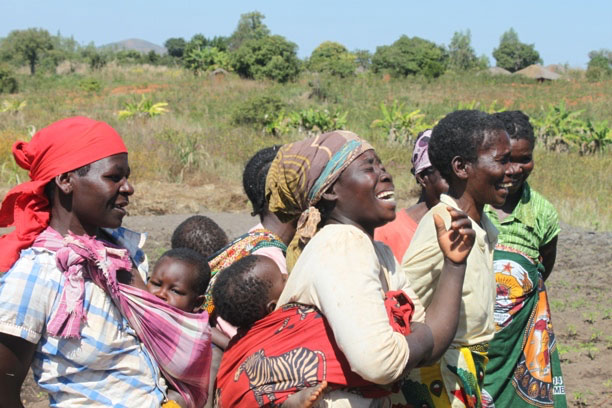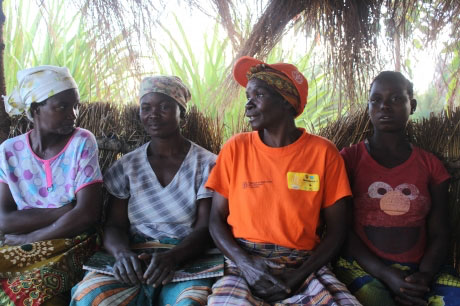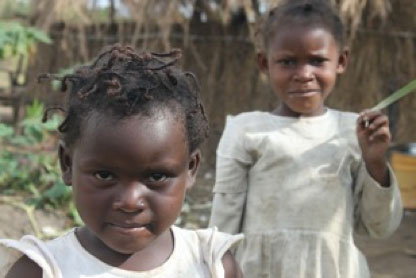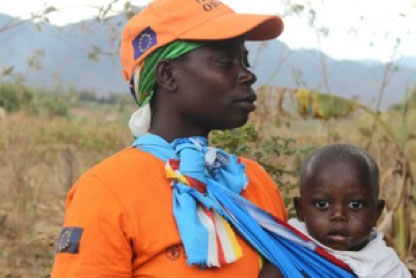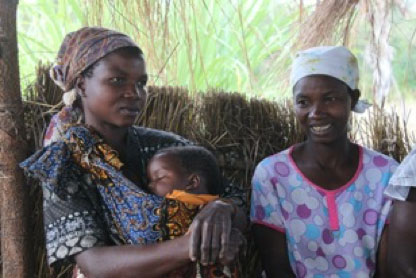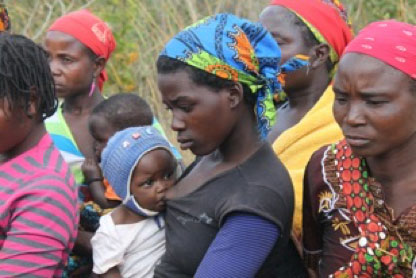At the first N4G Summit in 2013, 110 stakeholders committed to prevent at least 20 million children from being stunted – saving at least 1.7 million lives by 2020. These commitments deliver much-needed action on policy and financing commitments to the Sustainable Development Goal (SDG) 2—Ending Hunger in All its Forms—which is an underlying driver of 12 of the 17 SDGs. As we continue the Nutrition for Growth Year of Action, take a look at how pledges made during the N4G summits in London (2013) and Milan (2017), have brought about positive impacts on global nutrition.
The European Union made two ambitious commitments in 2012 and in 20131 that underpin the strategic and operational focus of its work on nutrition:
- To support partner countries to reduce the number of stunted children under the age of five by at least 7 million by 20252;
- To allocate €3.5 billion for nutrition between 2014 and 2020.
Progress achieved towards these nutrition commitments is highlighted in the annual reports3.
At the country level, these commitments have translated into multi-sectoral actions such as the Programme to accelerate progress towards MDG1.C in Mozambique (2013-2019). Despite its economic performance, Mozambique’s nutrition situation remains poor: stunting (43%) as well as women and child anaemia are very high, while overweight and obesity is increasing4. The causes of malnutrition are multi-faceted. The estimated GDP loss is 11% each year to child stunting alone, equivalent to $1.6 billion5. The MDG1.C Programme aimed to address the prevailing high levels of food insecurity and malnutrition, particularly in rural areas.
By targeting areas with high agricultural potential but poor nutrition in Beira and Nacala corridors, the specific objectives of MDG1.C Programme6 were to (i) improve agricultural and fisheries production; (ii) increase access to food; and, (iii) enhance the nutrition status of vulnerable groups and low-income households, with a focus on women and young children. The interventions included agricultural and fisheries value chains strengthening, e-vouchers, home gardens, food fortification, market information systems, nutrition education and social behaviour change. More than 80,000 people, including women, adolescent girls and schoolchildren, benefitted from nutrition and home gardening and nutrition education interventions alone.
Beneficiaries’ lives improved considerably in terms of food security, diets (including of women and adolescent girls7) and nutritional status of children, as compared to control groups8 (see table). In particular, the prevalence of stunting fell by five percentage points at district level and exclusive breastfeeding doubled over a period of five years9.
| Outcomes | 2013 | 2018 |
|---|---|---|
| Stunting | 45% | 40% |
| Food insecurity | 31% | 16% |
| Coping Strategy Index | 45% | 20% |
| Exclusive Breastfeeding | 27% | 54% |
| Children’s Diet | 30% | 35% |
Success factors included:
- Holistic package tackling multiple causes: Gains in food and nutrition security were much greater for those households reached by the most comprehensive range of interventions.
- Community-based delivery of services through networks of local workers (both female and male) who were more trusted and efficient in reaching not only mothers but other influential people (family members, local leaders).
- Culturally sensitive nutrition messages based on in-depth formative research, including traditional knowledge and participatory elaboration of education materials.
There are lessons to be learned from achieving such a multi-sectoral approach at scale:
- It is critical to include nutrition objectives into agriculture/market-based interventions from the outset at design stage; and
- The programme must adapt to different and specific contexts, at the same time strengthening local nutrition governance and developing the capacities of service providers at every level.
Some best practices, including social behaviour change and nutrition education in schools, were incorporated into national food and nutrition security policies and programmes. Lessons learned also informed the 2014-2020 EU rural development strategy in Mozambique maintaining a key focus on food and nutrition security and targeting nutrition sensitive investments in high-stunting provinces, through both long-term approaches and post-cyclones recovery and resilience programmes.
Quotes from Beneficiaries
“Communities have been reacting positively to the programme and more women, including their husbands, have shown keen interest in participating in the sessions, but the most important thing is the behaviour change in the communities and that the lessons are implemented in their homes”
Ruth Butao Ayoade, responsible for the programme’s nutrition education and home gardening components
“Reducing chronic malnutrition is not the responsibility of a single sector, but of everyone, therefore it is important to ensure that children under 2 years and our adolescents have access to various nutritious foods, as well as investing in maternal and childcare services, improving access to safe drinking water and sanitation, developing social transfer programs for the most vulnerable, and expanding nutritional education in communities”
Lina Portugal, Permanent Secretary of Tete province
“I used to make porridge for my children with only flour and sugar, but now I know we can make enriched porridge with other products or produce from our home gardens because nutrition comes from gardens”
Rosita Francisco Mocole, mother of three children, locality of Namite. Rosita (in the orange t-shirt) is a “care mother” and was chosen to take part in a FAO training and then given the responsibility to share what she learned with her community
“After this meeting and after what I heard at this seminar, I am motivated to invite the village leaders I coordinate (about 38 villages) to listen to the lessons children are learning in school about nutrition.”
Lino Chazuka, community leader of Tsangano district
“Children have brought the rainbow garden (varied crops that are reflected in varied food), a new approach they are learning at school. The community is satisfied with the new vegetables’ recipes. The way they are prepared is no longer the same. The children used to learn to eat fast, because they used the same dish but now everyone eats at will on the own plate”
Maurício Bulei, President of the Council of the Massiria Primary School, located in the district of Angónia
Quotes from http://www.fao.org/fao-stories/article/en/c/1099430/
Footnotes
- In August 2012, at the Global Hunger Event and in June 2013, at the Nutrition for Growth (N4G) high-level meeting
- Corresponding to at least 10% (7 million children) of the World Health Assembly goal by 2025
- https://ec.europa.eu/knowledge4policy/global-food-nutrition-security/eu-action-nutrition_en
- Mozambique DHS 2011; SETSAN Baseline Study 2013; Global Nutrition Report 2018
- The Cost of Hunger in Africa (COHA) Mozambique study 2017
- Designed to reinforce existing national programmes across six different ministries, the MDG1.C Programme implementation has brought together three UN agencies (IFAD, FAO and WFP) under the overall coordination and monitoring of the Government’s Technical Secretariat for Food and Nutrition Security (SETSAN). The MDG1.C Programme covered a total of 76 Districts in 10 of the 11 provinces in Mozambique. EU support €77.3M including €10M top-up following El Niño emergency in 2016.
- Evaluation of IFAD/PROMER agricultural marketing interventions showed the Minimum Dietary Diversity for Women (MDD-W) indicator improved in both women (from 28% to 40%) and adolescent girls (from 55% to 68%) between 2017 and 2018.
- SETSAN (2018) Reports of 2018 Endline Study (district level) and Impact Evaluation (community level) of MDG1C programme. Endline study limitations do not allow to attribute the impact only to MDG1c but also to other factors. Community-level impact evaluation results provide the best approximation of the effects of selected MDG1C interventions on food and nutrition security.
- Differences not statistically significant, except in one district (Tsangano) where stunting was reduced from 61% to 44%

